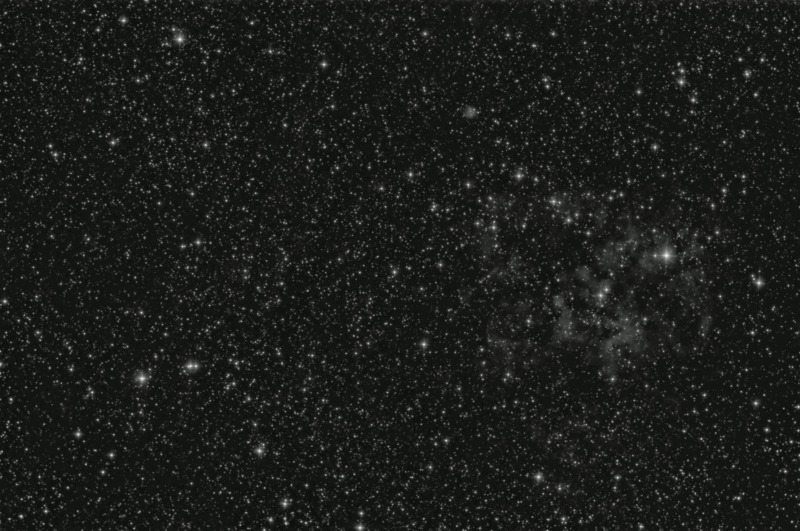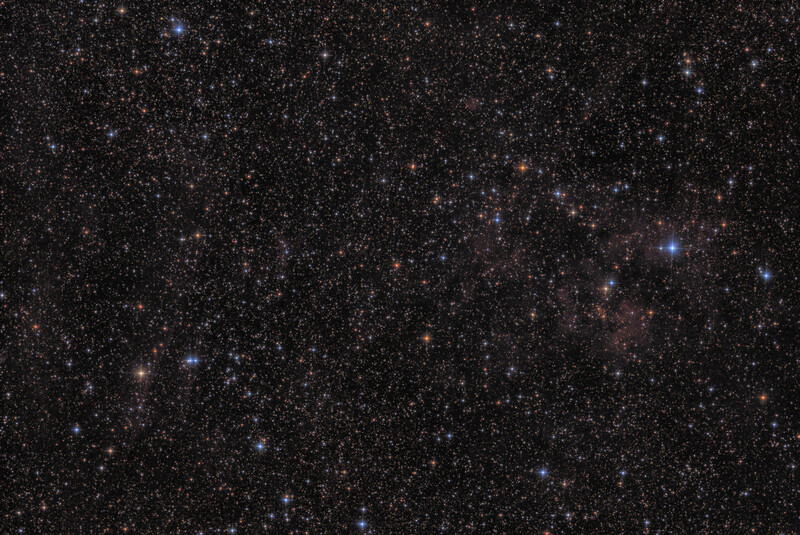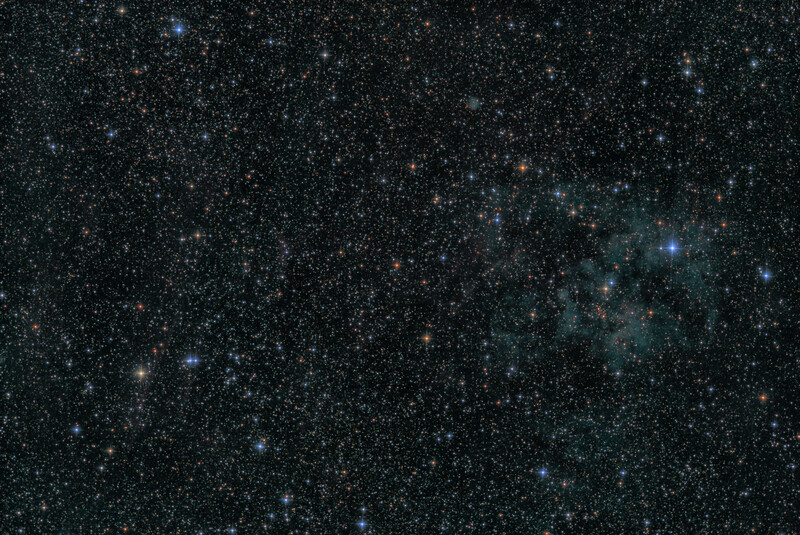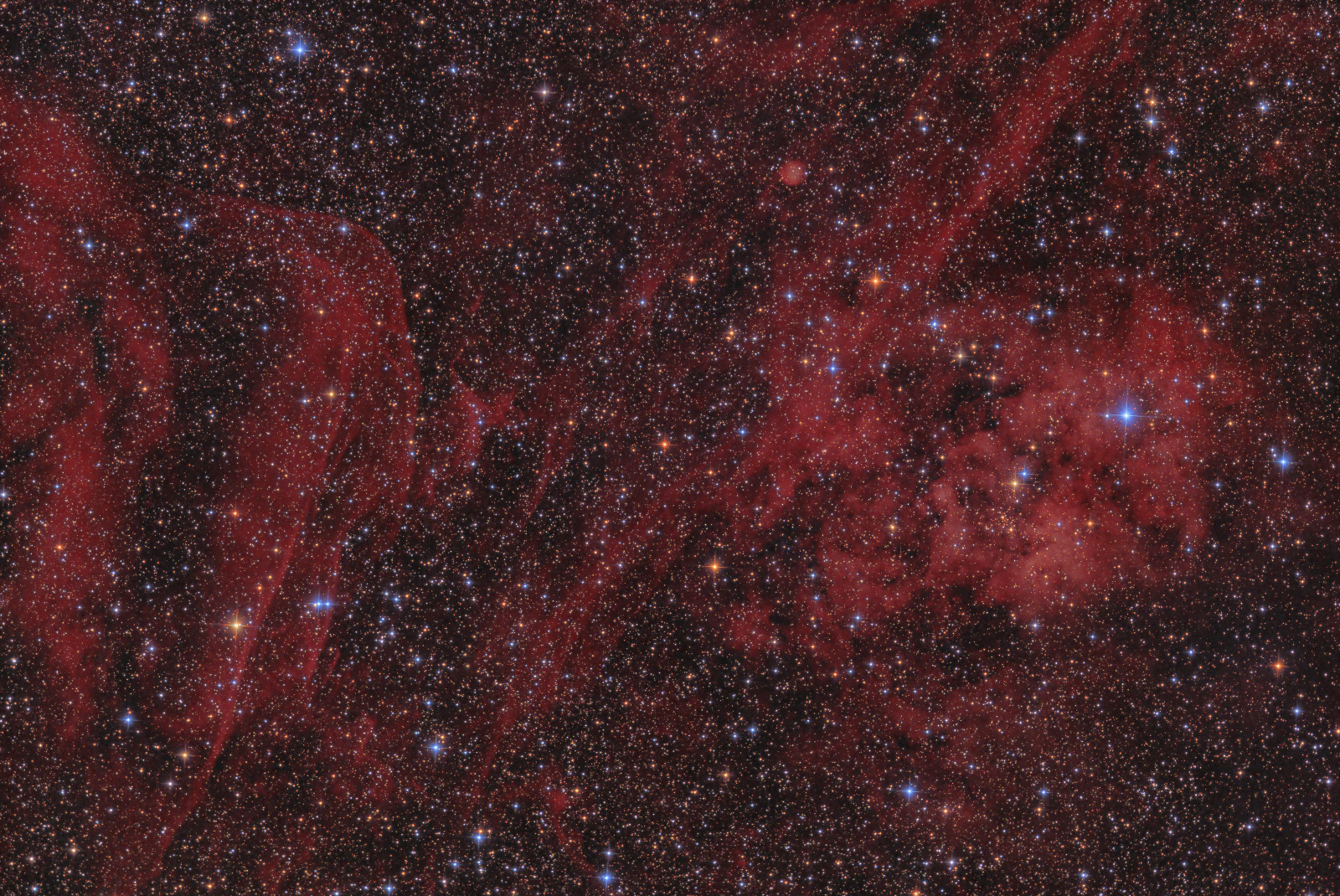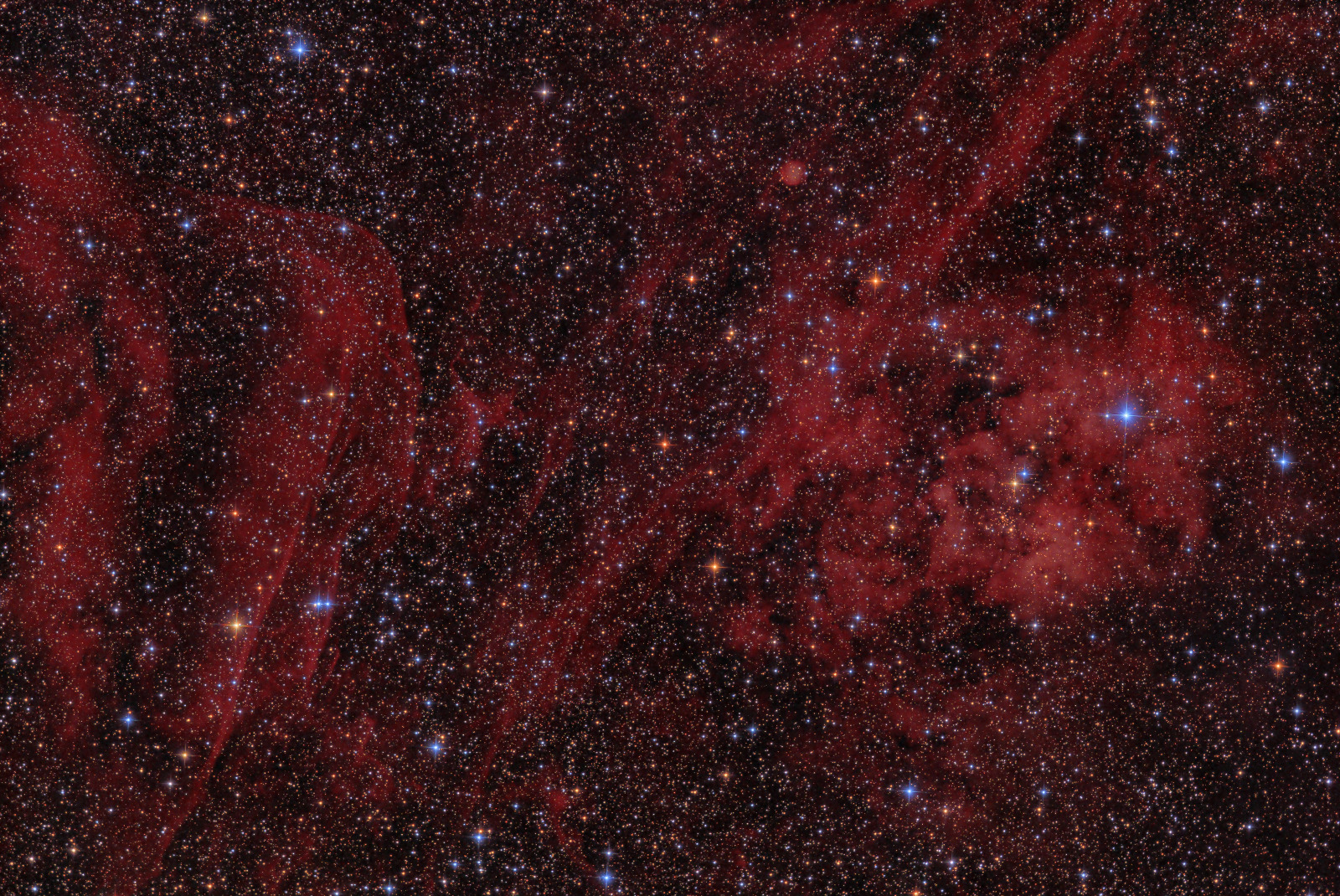So, what to do with this? Was the two nights of OIII just a waste of time?

It struck me that the SHO versions of this floating around the internet may be a bit doctored, to more or less extent. At minimum, I think some renditions have different non-linear stretching applied to each emissions filter before compositing them together. I'm not super disturbed by that, we do our own independent weighting of an emissions band when adding to broadband via NB Accent. It's just that you would lose the relative emissions concentrations that ST typically maintains in those compositions. A lot of edits though seemed to be using OIII-based masks to reduce Ha where the OIII is, basically cutting a hole for the blue to show through. Or, pixel math of "dynamic" narrowband, which is a fancier and maybe smoother way of cutting the same hole. Meh. So all that I think can fool one into believing the target can make a legitimate SHO.

I did see one edit in HOO where the OIII was just whitening up those regions of combined emissions, and I liked that, so looked to find a way to include all 6 filters during some testing.

First, I took my Ha and OIII and composited that manually as a bicolor with Ha as R and OIII into G and B, but as RGB, RGB, and then saved out the linear file, in essence trying to create a duoband file. That then became my NB Accent data and I chose duo Ha/OIII for final compositing.
One problem I ran into was that the NB Accent, probably mostly the OIII component, was bloating and fading out the star colors with excessive teal. - Note that teal and cyan are the only OIII choices in NB Accent, which is very 1950's pastel I guess.

In any event, this was difficult if not impossible to to a masked layer reversal of, even with fuzz, due to the nebulosity. And overall it also kind of wrecked any nice pinpointing done by SVD on the broadband synth L.
Ultimately what I did was to very lightly process the LRGB, meaning basically no enhancements, but in Color I boosted the saturation to 500%, with the intent to overwhelm the teal that would be imparted in the NB Accent step. It seemed to help. I balanced the Ha-OIII to like 55/45% and kept that, after which (even though this is backwards workflow) I tried out some sharpening and SVD. Now, SVD did not work so great and I imagine that is to be expected, with the stars' PSF's just a jumbled colored mess, but it did help a little bit. I think if there was a way to get enhancements, like deconvolution, into the separate NB Accent data before combining that all this could be smoothed over and things would match and look better.
After that I just ran a denoise. No SS or shrink, as the busy star field here seemed a feature to me rather than a bug.
Next I took a previously-processed LRGBHa (the one where reversal worked okay but included a good SVD) and layer blended that in at about 25%, which gave the Ha a needed boost of red features and fainter outer color. Finally, I just made a mask of the super tiny stars that had some ringing and used dering with no iterations and no color taming in the shrink module.
I think the end result is a somewhat reasonable LRGBHaOIII that fairly represents what is there in this faint, but star and Ha busy, region.

Anyone have any ideas on reworking the oddball workflow here for things to be better?
Oh and with the busy image, downsampling to anywhere near 500kb was pretty much impossible. So, here's a link through to a (still downsized) file in the CN gallery, and the astrobin staging area which has the full file. I think the full file might look better.
https://astrob.in/y21ilt/0/
